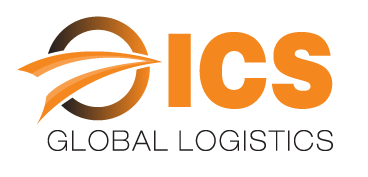The Future of Australian Customs Clearance: Embracing Technology and Innovation
The landscape of customs clearance in Australia is undergoing a transformative shift as technology and innovation redefine traditional processes. At ICS Global Logistics, we welcome this transformation in the execution of our freight forwarding, import and export logistics, and customs clearance operations.
In an era marked by globalisation, the demand for efficient and streamlined customs procedures has never been more critical. This guide looks at how Australian customs clearance is changing. It explores new technologies and innovations that are making it easier to move goods across borders and improving international trade.
Evolution of Australian Customs Clearance
Historical Context
Traditionally, customs clearance has been a manual and time-intensive process, involving extensive paperwork, physical documentation, and complex regulatory compliance checks. The evolution of technology is challenging these traditional norms, ushering in a new era of efficiency and transparency.
Current Challenges in Customs Clearance
The existing customs clearance landscape in Australia faces various challenges, including delays, errors, and the need for increased transparency. These challenges have prompted a reevaluation of processes, paving the way for technological interventions.
Technological Advancements Shaping the Future
Blockchain Technology
Blockchain technology is emerging as a revolutionary force in customs clearance. By providing a decentralised and transparent ledger, blockchain ensures the integrity and traceability of transactions. This technology enhances security, reduces fraud, and expedites the verification of trade documents.
Artificial Intelligence (AI) and Machine Learning (ML)
AI and ML are revolutionising customs clearance by automating routine tasks, such as document verification and data analysis. Intelligent algorithms can quickly process large volumes of information, identify patterns, and make predictions, significantly reducing processing times and enhancing accuracy.
Data Analytics for Risk Assessment
Advanced data analytics tools enable customs authorities to conduct more effective risk assessments. By analysing historical data and identifying patterns associated with illicit activities, customs agencies can enhance their targeting capabilities, ensuring that inspections are focused on high-risk shipments.
Internet of Things (IoT) in Cargo Tracking
The integration of IoT devices in cargo shipments allows real-time tracking and monitoring. Container sensors track location, temperature, and condition to ensure goods meet regulations and stay safe during transportation.
Automated Customs Clearance Platforms
Automated customs clearance platforms leverage digital technologies to streamline the entire customs process. These platforms facilitate electronic submission of documentation, automate compliance checks, and provide real-time updates, reducing paperwork and expediting clearance.
E-Government Initiatives
Governments are increasingly adopting e-government initiatives to digitise and centralise customs processes. Online portals and platforms enable stakeholders, including importers, exporters, and customs brokers, to submit documents, pay duties, and track the status of shipments from anywhere in the world.
Benefits of Technological Integration
Efficiency and Reduced Processing Times
The integration of technology in customs clearance significantly reduces processing times. Automated processes and instant data sharing make sure goods move quickly through clearance, reducing delays and improving efficiency.
Enhanced Accuracy and Compliance
Automated systems and advanced data analytics contribute to improved accuracy in customs clearance. By reducing manual intervention, we minimize the likelihood of errors and enhance compliance with regulatory requirements.
Cost Reductions for Businesses
The adoption of technology in customs clearance translates to cost savings for businesses. Streamlined processes, reduced paperwork, and faster clearance times contribute to lower operational costs, making international trade more financially viable for businesses of all sizes.
Improved Security Measures
Enhanced traceability through technologies like blockchain and IoT contributes to improved security in the supply chain. Customs can track and monitor shipments, reducing illegal activities and ensuring global trade safety. At ICS Global Logisitcs we understand the importance of client security.
Challenges and Considerations
Data Security and Privacy Concerns
As customs clearance processes become increasingly digitised, concerns regarding the security and privacy of sensitive data arise. Finding the right balance between easy access and strong security is important for trust in online customs clearance.
Global Standardisation
Achieving global standardisation in customs procedures and technologies is a complex challenge. Harmonising digital systems and ensuring interoperability among different countries require collaborative efforts on an international scale.
Integration with Existing Systems
Many customs authorities and businesses have legacy systems in place. Integrating new technologies with existing systems poses challenges, and careful planning is necessary to ensure a smooth transition without disruptions to ongoing operations.
Case Studies and Success Stories
Australian Trusted Trader Program
The Australian Trusted Trader (ATT) program exemplifies the successful integration of technology in customs clearance. By providing accredited traders with streamlined processes, reduced documentation requirements, and priority treatment, the program enhances efficiency and promotes compliance.
Singapore’s Networked Trade Platform (NTP)
Singapore’s NTP is an integrated platform that connects various stakeholders in the trade ecosystem. The platform facilitates end-to-end digitalization of trade processes, reducing administrative burdens, and promoting a more transparent and efficient trade environment.
The Path Forward: Recommendations and Future Developments
Investment in Training and Education
To fully realise the benefits of technology in customs clearance, investment in training and education is crucial. Customs officials, businesses, and stakeholders must have the right skills to use digital platforms effectively.
International Collaboration and Standardization
Governments and international organisations must collaborate to establish global standards for digital customs clearance processes. Interoperability and standardised protocols will facilitate seamless cross-border trade and information exchange.
Continuous Innovation and Adaptability
The future of customs clearance is dynamic and evolving. Continuous innovation and a commitment to adaptability are essential for customs authorities and businesses to stay ahead of technological advancements and leverage emerging opportunities.
Technology and innovation undeniably intertwine with the future of Australian customs clearance. New technologies like blockchain, AI, and IoT are improving customs processes, making global trade faster, safer, and more connected.
Australia and other countries are adopting advancements. These advancements have many benefits. Some benefits include faster processing, better accuracy, cost savings for businesses, and improved security.
Success comes from working together, setting global standards, and always finding new ways to improve. This will make customs clearance faster, more open, and better able to handle changes in global trade.
At ICS Global Logistics we stay ahead of the game.

